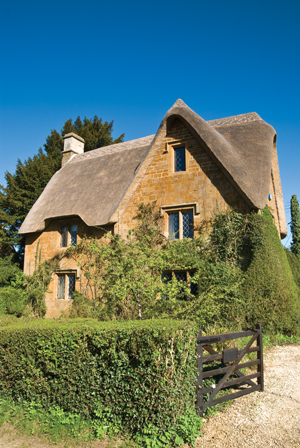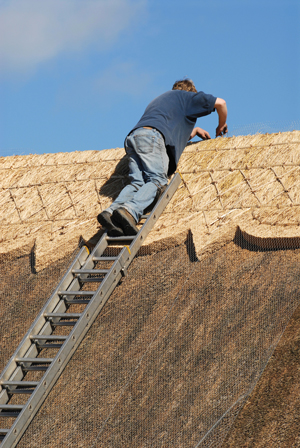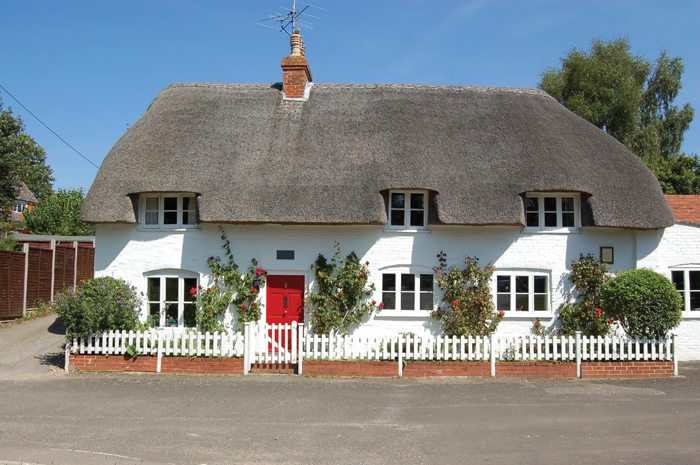A thatch made in heaven
For many, life beneath a thatched roof is the epitome of rural living, but misconceptions often deter buyers according to leading rural insurer NFU Mutual.
Maintenance and fire of thatch properties can often deter buyers but they are no more likely to catch fire than a conventional roof. To help potential buyers and those who already have the pleasure of residing under a thatched roof, the NFU has offered advice on the risks and maintenance of thatch roofs.
 Claims for fires in thatched properties during 2014 are expected to cost NFU Mutual in the region of £4.6 million once all settled. However, the number of fires in thatched properties accounted for less than 1% of all fire claims in domestic properties handled by the insurer during the year.
Claims for fires in thatched properties during 2014 are expected to cost NFU Mutual in the region of £4.6 million once all settled. However, the number of fires in thatched properties accounted for less than 1% of all fire claims in domestic properties handled by the insurer during the year.
High Value Home Specialist at NFU, Nicki Whittaker, explained that maintenance and fire are the two most common concerns voiced by prospective buyers, but statistically a thatched roof is no more likely to catch fire than a conventional roof: “It is simply a matter of taking precautions and making sure you understand and take steps to minimize the potential risks involved,” she said.
A new thatched roof should last between 15-35 years, depending on the type and quality of materials used, while maintenance on a typical three or four bedroom home will usually include replacing the ridge every 10-15 years.
However, the insurer does point out that while thatched roofed homes are no more likely to catch fire than homes with a conventional roof, it is important to remember that if a thatch does ignite the fire is very difficult to control and the results can be devastating with some buildings being partially or totally destroyed.
Nicki points out that 90% of thatch fires relate to chimneys and the use of wood-burning stoves. So making sure your chimney is swept and inspected on a regular basis and that it is appropriately lined can all help to reduce the fire risk.
 The NFU offer the following tips for finding or maintaining your perfect thatch:
The NFU offer the following tips for finding or maintaining your perfect thatch:
Take time to stand and look at the condition of the thatch.
If fixings are exposed it could indicate it is nearing, or is at the end of its life.
If gullies are appearing (vertical deep patches of rot) these will require the attention of an experienced thatcher.
Wet patches on the eaves could indicate the thatch is leaking.
If the roof is covered in heavy moss, it could mean that the thatch is unable to breath and is therefore unable to dry out properly.
Although a high quality ridge will only need replacing every 12-15 years, a poor quality ridge may only last 5-7 years. Sometimes, however, the ridge may look shabby, whilst still serving its purpose of keeping water out.
Homeowners or potential buyers can check out the National Society of Master Thatcher’s for their nearest registered member or speak to Thatching Advisory Services if they are unsure about the condition of a thatched rood.
For more information on how to protect a thatched property visit www.nfumutual.co.uk
Photo credit: ©all photographs NFU


